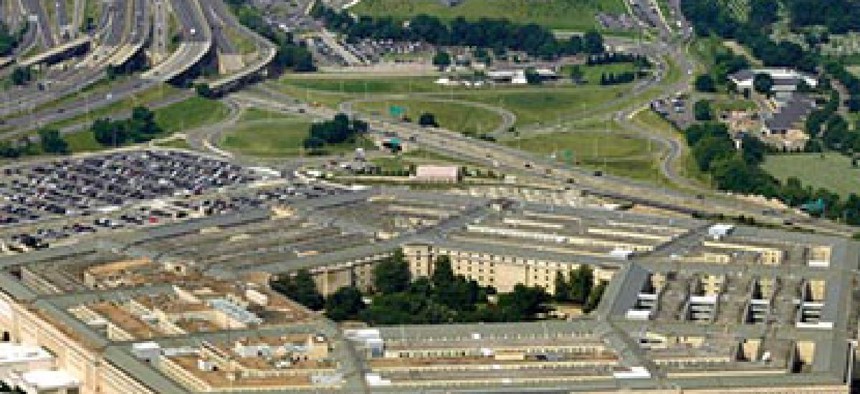DOD tries to allay industry fears on intellectual property

Assistant Secretary of Defense for Acquisition Katrina McFarland says the Pentagon wants to own the interoperable parts of a system, not a firm’s commercial secrets.

Addressing an audience of defense executives and military acquisition officials, Assistant Secretary of Defense for Acquisition Katrina McFarland on Nov. 4 sought to clarify how much intellectual property the Defense Department is interested in owning in a project it outsources to private industry. McFarland and other DOD leaders argue that maintaining a delicate balance of owning parts of a project to control its upkeep but not owning too much IP as to scare off bidders could help shore up the U.S. defense industry's dwindling technological edge.
DOD does not want to own IP when it amounts to business secrets a firm can leverage for competitive advantage, McFarland told a conference hosted by Defense Daily in Washington, D.C. Rather, the department wants to own the interfacing part of a system that would be interoperable with another firm’s technology added later in a project, she said.
Defense Acquisition University defines open systems as those that use open, public interfaces and formats, making them interoperable and portable. To encourage competition for projects, and in turn save money in tight fiscal times, DOD has made open-systems architecture a key tenet of Better Buying Power 3.0, the latest edition of acquisition reform that the department unveiled in September. BBP 3.0 is now in draft form and won’t become DOD practice until the department hears more from industry, Congress and other stakeholders in the coming weeks.
McFarland took the podium to dispel some of the apparent misconceptions that defense firms have relayed to her about open-systems architecture. "There's a lot of confusion related to intellectual property and open-systems architecture," she said. "There is no interest in the government in pursuing intellectual property when it's the secret sauce of the company."
In introducing BBP 3.0 in a white paper, Frank Kendall, the undersecretary of Defense for acquisition, technology and logistics, wrote that DOD had had "varying degrees of success in the past" with pursuing open-systems architecture. "We need to do a better job of ensuring that our designs are modular -- and that the government is in a position to control all the relevant interfaces so that competitors have the opportunity [to] win their way onto our programs."
McFarland echoed that argument Nov. 4, saying that DOD had not yet adopted open-systems architecture "at the level that I’d like to see." Nonetheless, 75 percent of the acquisition strategy carried out across the department since July 2012 had involved open-systems architecture, she said.
DOD program managers are charged with implementing this shift in acquisition policy. McFarland said she instructs program managers to think about future threats and how technology will evolve when designing a given system. That mindset is especially important when it comes to cyber threats, many of which stem from open-source information, she said.
"In order for us to be able to address this threat, we have to jump ahead of it," she added, calling for industry to develop more open-architecture cybersecurity systems.
Speaking later in the day at the same conference, Lt. Gen. Michael Williamson, principal to the assistant secretary of the Army for acquisition, logistics and technology, offered an illustrative example of the cost savings possible from open-architecture systems.
Williamson said he heard recently from an Army program manager who wanted to upgrade software for a control system and was confronted with 11 software languages, making the situation unnecessarily and inordinately complex.
"The challenge for us has been the cost associated with not only the software development, but also the software maintenance and the post-production software cost," he said. "And as a service, it's unaffordable for us to continue down a path where we have hardware and software proprietary systems that cause us to spend a lot of money in post-production trying to maintain connectivity and interoperability."
NEXT STORY: Data Transparency: The DATA Act and Beyond





